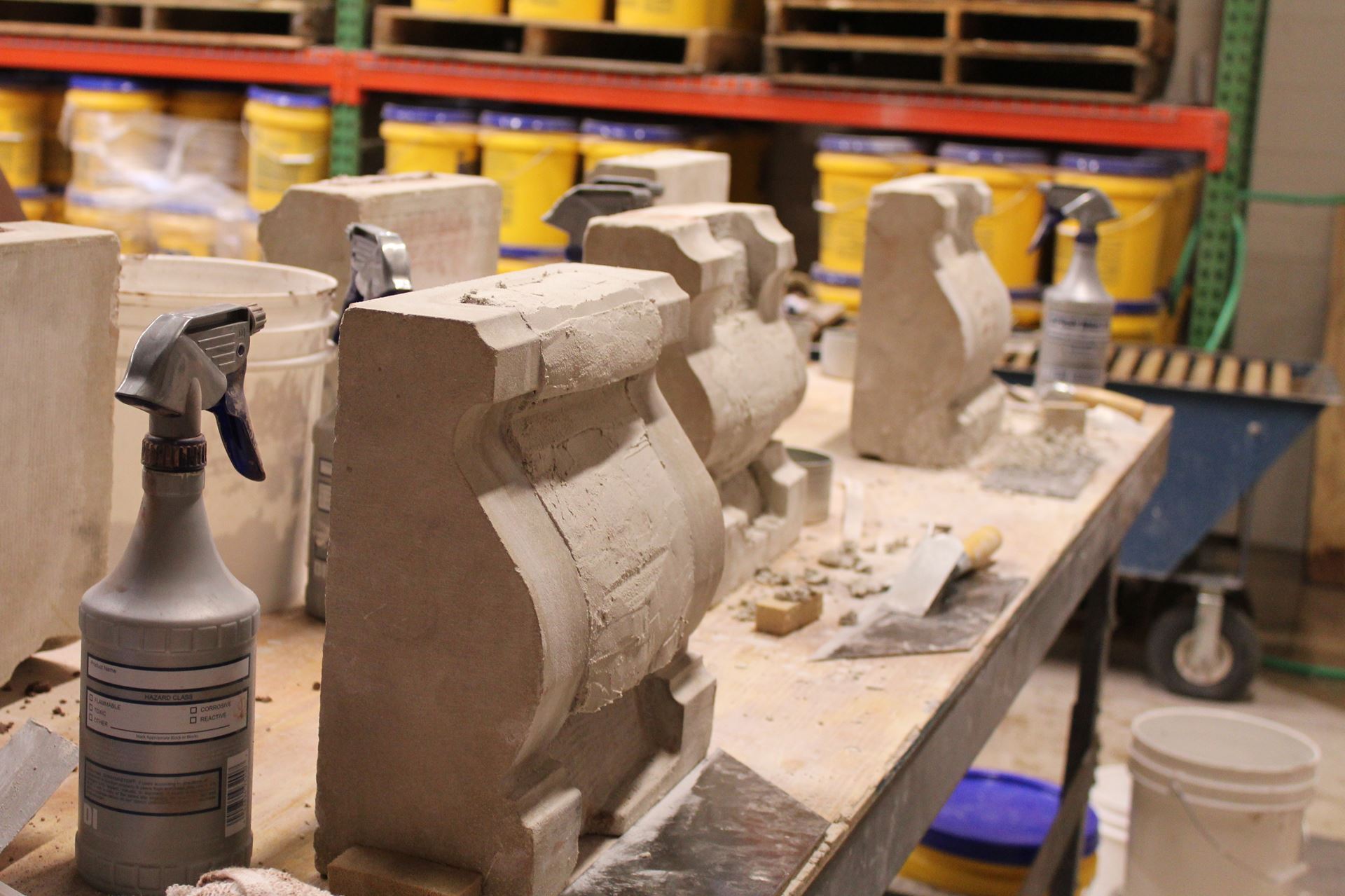Welcome to Preservation Pointers, APT DC’s new blog series! Here, we will post about events, tours, and lectures hosted by APT DC. The blog will summarize the important points from those events which we feel are the most useful to preservation professionals.
Preservation Pointers #1: Takeaways from APT DC’s April Tour of Cathedral Stone
Cathedral Stone, Inc., manufacturer of specialty cleaning products, paint strippers, and repair mortars for masonry, hosted a tour and hands-on learning experience for APT DC on Saturday, April 22, 2017 at their manufacturing facility. The following topics were discussed.

Masonry Cleaners
There are several different categories of cleaning products available to preservation professionals for use on masonry. It is important to understand the proper uses and application for each, and to always test cleaners prior to full application. Some of the most common types of cleaners on the market are:
- Biological Cleaners: Used to remove algae, lichen, and other forms of biological growth.
- Detergent Cleaners: Typically mild, non-acidic, and safe for use on all masonry surfaces including calcareous and polished stone
- Acidic cleaners: Containing varying concentrations of acidic cleaning agents. Acidic cleaners generally should not be used on calcareous or polished stones and should be used with caution.
- Waterless Latex Cleaners: Cleaner applied in gel form that cures and can be stripped as a solid. This type of cleaner is ideal for interior surfaces where large amounts of rinsing water is not possible.
Paint Strippers
As the preservation industry moves away from solvent-based paint strippers due to health and environmental concerns, more water-based products are becoming available. Water-based paint strippers have the following advantages:
- Non-flammable
- Low VOC
- Biodegradable
- Applicators require no or little protective gear
- Neutralization with only water or denatured alcohol
- No need to cover, non-hazardous
- No HAPs or TAPs (Toxic/hazardous air pollutants)
- No BTEX chemicals
- Non-carcinogenic
Repair Mortars
Failures in masonry restoration often result from patching materials that are stronger than the stone substrate. It is critical that patching materials have a lower compressive strength the substrate itself. Porous stone substrates also need to be able to breathe. Patching materials that have low water vapor permeability entrap moisture within the stone, leading to failure. Polymers, which are often used as an adhesive agent to form a strong bond with the substrate, can eventually lead to failure by trapping water and salts. They also tend to discolor over time because they are not UV stable.
When selecting a patching mortar, it is critical to select a material that is colored with UV stable pigments that will not fade out. It is also important to recognize the effect of the amount of mixing water on the color of the cured mortar. When evaluating mortar samples for color, they should always be applied on a proper substrate. The practice of creating mortar samples in coffee cups, common among some masonry contractors, doesn’t give a true representation of color because water is not allowed to evaporate through the Styrofoam or plastic. Instead, samples should be placed on a porous substrate, ideally the same substrate where mortar will be applied.